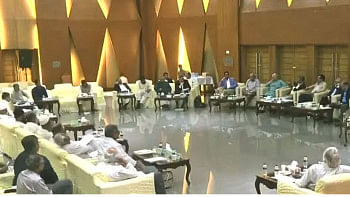The role of judiciary in addressing academic plagiarism

In academia, plagiarism— the act of borrowing someone else's work without giving due credit is treated as an offence— almost as a mortal sin. In the Western academic world, both the teachers and students are punished for plagiarising. Dismissal, demotion, fine, withholding of a degree, etc. are the common forms of punishment for this offense. The High Court Division of Bangladesh in Samia Rahman v Bangladesh 2021, dealt with the issue of plagiarism. The writ petition was filed by an Associate Professor, Department of Mass Communication and Journalism, University of Dhaka, who was demoted to the post of Assistant Professor for a period of two years, due to allegations of plagiarism. The High Court Division declared that the order issued by the university syndicate demoting the petitioner was void ab initio and had been made without lawful authority, since no formal charges along with the statement of allegations were framed against the accused, and the penalty proposed to be imposed was not specified as such by the syndicate.
The decision of the High Court Division (HCD) relied on the requirement of observance of natural justice and iterated the notion that procedural due process requirements must be followed in disciplinary issues, even by academic institutions. The court, however, also made some observations with regard to plagiarism and the role of universities in preventing such corrupt practices. The court rightly abstained from deciding whether the article in question was plagiarised or not— as it was an academic question of fact. The High Court Division observed that plagiarism is "an intellectual crime" and "essentially theft and fraud committed simultaneously." The court, however observed that a university is obligated to take measures to detect and prevent plagiarism. The measures may include procuring softwares to check plagiarism, formulating policies, setting criteria for acceptable research work, through using references, training teachers on ethics, citations and publishing, etc. Another bench of the High Court Division even went on to form a seven-member expert committee to formulate guidelines to prevent plagiarism in Ph.D. programmes in all public universities. The order came in pursuance of a public interest litigation filed due to the concerns of a growing number of inauthentic Ph.D. theses. The incidents of plagiarism have compelled the University Grant Commission (UGC) to purchase Turnitin, a software to detect plagiarism. The UGC has provided this software to many universities, and many others are using it on their own initiative.
Unfortunately, in many instances, the High Court Division had to address the issue of plagiarism in academia. The issue of plagiarism should be dealt with administratively by the educational institutions. While the practice of approaching the court in such matters is quite common, it is usually done in response to denial of due process, defamation due to false, unproven allegations and breach of contract. In rare instances, for example in Faulkner v University of Tennessee (1994), Ntreh v University of Texas (1997), etc., the courts proceeded to inquire into the allegation of plagiarism. However, it is not warranted that disputed questions of fact be dealt with in writ petitions. Furthermore, it is also not practical for courts to review matters which are purely academic in nature. Plagiarism detection software have the potential to considerably decrease the need for judicial intervention in the investigation of plagiarism. However, universities must formulate policies involving human overseers regarding academic dishonesty and editorial and review boards of journals, theses, etc., as there could always be lapses within the software-based results.
The writer is a Lecturer of Law, Port City International University.

 For all latest news, follow The Daily Star's Google News channel.
For all latest news, follow The Daily Star's Google News channel. 



Comments